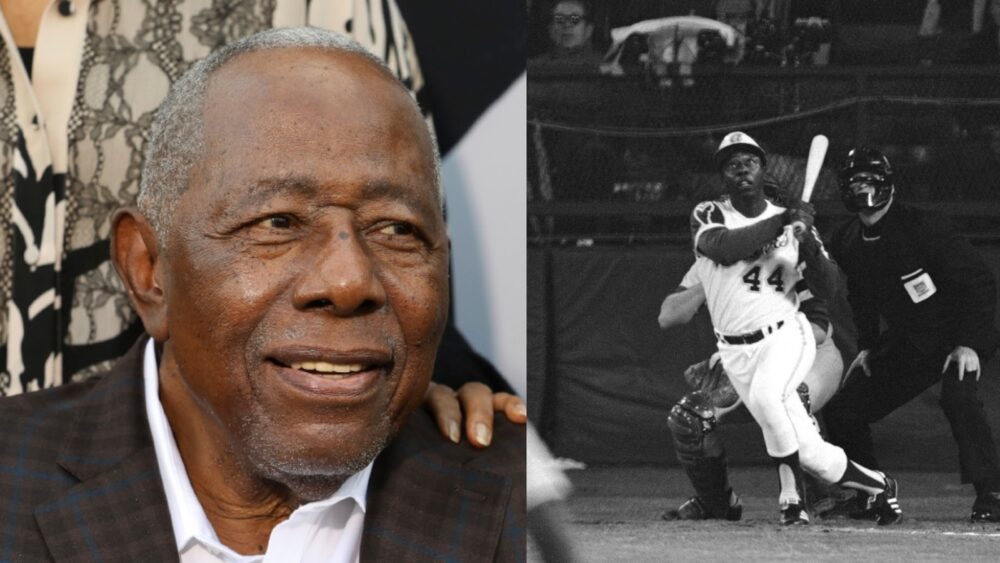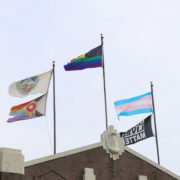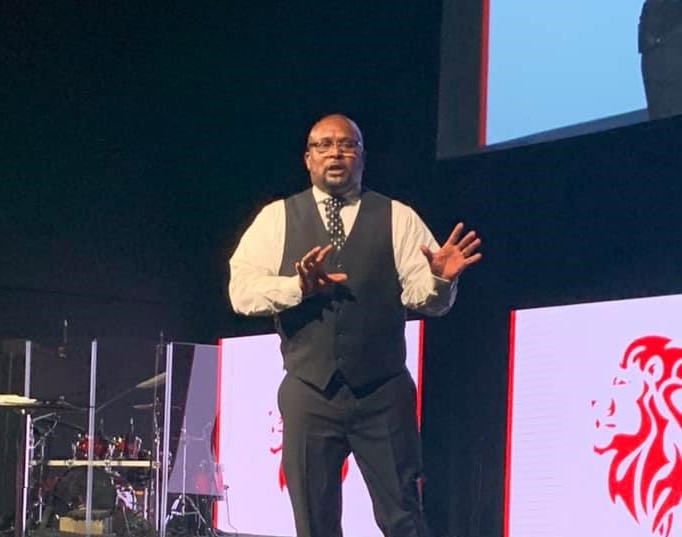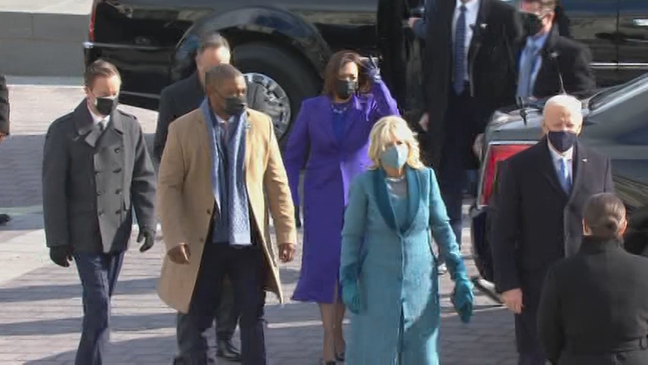
By WSBTV Staff
He is the one man that Muhammad Ali said he idolized “more than myself.” He became known to the world as “Hammerin’ Hank.”
Legendary Atlanta Brave and Major League Baseball record holder Hank Aaron died Friday at the age of 86, according to Aaron’s daughter.
Born in Mobile, Alabama, on Feb. 5, 1934, Henry Louis Aaron was one of eight children born to Herbert and Estella Aaron.
His family was so poor they could not afford baseball equipment, so he began honing his baseball skill by hitting bottle caps with sticks.
[PHOTO GALLERY: Hammerin’ Hank Aaron through the years]
Aaron had his first major league tryout as a 15-year-old with the Brooklyn Dodgers in 1949.
Although he did not make that team, he did make an impact and returned to school to get his diploma.
RELATED STORIES:
In November 1951, at the age of 17, Aaron began his minor league career with the Indianapolis Clown’s organization of the negro leagues.
In an interview with Channel 2′s Justin Wilfon at his 80th birthday celebration, “Hammerin’ Hank” said his family’s support helped him make his dream come true of playing baseball.
“If it hadn’t been for my brother, my uncle, sharing their love and making me realize that — although I had a dream at that time — but if I keep looking and pursue it, that I could match it,” Aaron said.
Seven months later, in June 1952, Aaron chose to sign with the Boston Braves over the New York Giants, because the Braves offered $50 more a month.
The Braves had their 21-year-old building block. The Giants missed out on a Hank Aaron, Willie Mays outfield tandem.
Instead, the tandem of the Braves franchise in Bean Town was over. The team moved to Milwaukee in 1953, and one year later, Aaron made the big-league roster.
That first season, Aaron wore No. 5. He switched to No. 44 in 1955. That same year, at age 21, Aaron made the first of his record 21 All-Star selections and his record 25 All-Star appearances.
Aaron won the National League batting title in 1956 and won his only MVP award the following year after hitting 322 and finishing in the top three in all three triple crown batting categories.
He capped his MVP ’57 season by clinching the pennant with a home run in inning 393 in a seven-game World Series victory over the New York Yankees.
RELATED STORIES:
The Braves moved to Atlanta in time for the 1966 season, and within two years, Aaron was recording milestones in Georgia.
“Honestly, I was scared coming to a high-profile city like Atlanta,” Aaron told Channel 2 Sports Director Zach Klein. “Knowing that Dr. King was here, Andy Young and some of the other great civil rights leaders that made their home here, and I’m coming from Milwaukee where there was no activity at all … It makes you start thinking about what it is, what can you do, what role you can play. And makes you feel like you kind of shortchanged everybody really, you didn’t do your job.”
Aaron said he knew that Atlanta was becoming the hub for the civil rights movement and said he didn’t think he would become a figure that would emerge out of that movement.
“To be honest with you, I felt a little ashamed of myself, because I was so far back in the sticks, in the woods, that I didn’t know what was going on. It kind of made me start thinking, realizing that, regardless of what I achieved in life, no matter whether it’s baseball, football, basketball, life, lawyers, whatever it may be, that I still had a role to play,” Aaron said.
Aaron recalls when he finally realized he was now part of a changing world.
“I think it hit me when we played an exhibition game, and I don’t know when, in Macon. I think it hit me when I realized that I had some kind of role that I should be playing. I’m not talking about a baseball role, I’m not talking about somebody going out on the baseball field, someone who had a role to play to help other blacks like myself,” Aaron told Klein.
As Aaron started turning into “Hammerin’ Hank,” he would eventually meet the biggest figure of the civil rights movement – right in the stands.
“I didn’t spend much time with him. I met him here, at the ballpark. Came here with some other friends of his, and I met him then. I didn’t spend as much time as I would have loved to have spend with him. I made that up, of course, by spending a lot of time, and still spending a lot of time, with my brother now, Andy Young. I wish I could have spent a lot of time,” Aaron said.
“I realized he was the voice of a lot of African-Americans around. I realized that he did some things, said some things that you started thinking, you know, if things had been a little different we could have done this, and he was making it a reality. He was making all those things a reality.”
Aaron became the first player in Major League history to record 500 homers and 3,000 hits. He went on to hit 40 or more home runs seven different times, finishing third in the MVP voting six times.
At the age of 37, he hit his career high in home runs, 47 of them and set a new career best in slugging percentage.
At age 39, Aaron recorded his eighth 40-homer season finishing that year with 713 for his career, just one home run shy of Babe Ruth’s major league record.
That offseason, Aaron received numerous death threats and loads of racist letters.
“Dear Hank Aaron, Retire or DIE!!! The Atlanta Braves will be moving around the country and I’ll move with them …” Aaron recalled one of the letters saying.
The hand-scrawled letter went on to lists dates and cities for Braves games and issued more threats.
Aaron said he slept at the ball park on several occasions, because for him that was a safe place.
“The greatest protection I had for myself, regardless to whatever I was doing, even when I got all of the threat letters that I got, is that the greatest moment I had, and the safest moments for me, were right here at the ballpark. For some reason I always felt like I was safe in this ball park,” Aaron said.
The U.S. Postal Service honored Aaron for receiving nearly 1 million pieces of mail, more than any non-politician.
But the pressure was unrelenting throughout the offseason prior to the 1974 campaign.
With Aaron just one homer shy of the record, Braves management wanted the team to open at the Atlanta-Fulton County Stadium, but the Braves schedule had them playing their first three games in Cincinnati.
Aaron tied the record in his first at-bat with his very first swing of the season. He did not play another game until April 8, 1974, against the Los Angeles Dodgers.
In front of 53,775 spectators and a national TV audience, Aaron broke the Babe’s record with home run No. 715.
Because of the threat of violence against Aaron, his family would have to join the millions of people to see the record setting home run from home.
Aaron’s son, Lary, who was 16 at the time, said he was terrified when his father made the historic hit.
“When the guys ran out on the field, it was most scary part,” Lary Aaron told Mississippi Braves radio announcer Kyle Tait. “We didn’t know who they were.”
He hit his 733rd and final home run as a Brave on Oct. 2 of that year.
The Braves traded Aaron to the Milwaukee Brewers prior to the 1975 season and Aaron broke Ruth’s RBI record and hit his final 22 home runs in a Brewer’s uniform, hitting a 755th final home run on July 20, 1976.
After a 23-year career, Aaron retired in 1976 as Major League Baseball’s all-time leader in home runs. He remains the all-time leader in career RBIs, extra base hits and total bases.
Aaron also ranks in the top five in career hits, runs at bat and games played.
The Brewer’s retired Aaron’s No. 44 in 1976. The Braves retired his uniform in 1977.
Aaron was inducted into the National Baseball Hall of Fame in 1982 and received the Presidential Medal of Freedom in 2002.
Aaron had held various positions in the Braves front office since his retirement. He also has statues outside Turner Field, Truist Park and Miller Field in Milwaukee.
Despite all of his accomplishments on the ball field, there is still a lot of work that needs to happen off the field.
“My hope is one day people will judge me by character rather than by the context of my color. And I think when that day comes, that’s the day I’m going to say ‘Hallelujah’,” Aaron said.
“God put you here for a reason. And the reason he put you here is not for you to stand still. He put you here to make you understand that … you gotta do all you can to try and make things better for other people.”
On Jan. 5, Aaron received his COVID-19 vaccine at Morehouse alongside his close friend Ambassador Andrew Young and Dr. Louis Sullivan.
“I feel wonderful,” Aaron told us that day. “It makes you feel like you are doing something not only to help yourself, but to help your community.”










